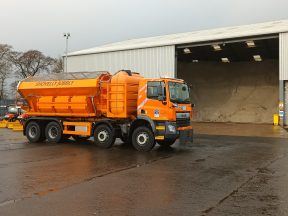A fungus-like pathogen known to affect a variety of tree species has been found in the north-west of Scotland.
Phytophthora pluvialis has been known to infect western hemlock, Douglas fir, tanoak and several pine species, in particular radiata pine.
The pathogen has been discovered near Loch Carron and has prompted Scottish Forestry to restrict the movement of timber in infected areas to prevent further spread of the disease.
It is reported to cause needle cast, where needles turn brown and fall off, shoot dieback, where roots and branches are killed, and lesions on the stem, branches and roots.
The Scottish Government organisation is set to close off infected sites and carry out investigations at potential high-risk areas.
Landowners and staff working in the forest industry and tree nurseries in the area are being urged to be vigilant to help avoid further spread of the pathogen.
Lorna Slater, minister for green skills, circular economy and biodiversity, said the Scottish Government is taking action to protect areas at risk.
“We are imposing a movement restriction in the area of the find at Loch Carron and will continue targeted inspections at potential high-risk sites across Scotland,” she said.
“We are asking the forestry industry and landowners to help tackle this pathogen and avoid its spread.
“Please check the health of western hemlock and Douglas fir trees on your land.”
She said the key symptoms to look for in trees are lesions on the stem, branch or roots, and to report any suspect trees immediately via Tree Alert – an app set up to gather information about the health of the nation’s trees.
“We also want to emphasise that everyone visiting the countryside and our woods can help prevent the spread of pests and pathogens by taking simple steps and ensuring they clean their shoes, bike tyres and pet’s paws before visits,” she added.
“Everyone has a part they can play in protecting our woodlands.”
P.pluvialis was found for the first time in the UK this year on western hemlock and Douglas fir, according to Scottish Forestry.
The pathogen has now been detected in Devon, Cornwall and Cumbria in England, and now near Loch Carron north of the border.
As the disease has never been detected in Europe before, research is ongoing to understand if other potentially susceptible species could become impacted.
Scottish Forestry said it will continue to work with partner agencies across the UK to share information about the pathogen and to maintain a joint approach to managing the disease.
Follow STV News on WhatsApp
Scan the QR code on your mobile device for all the latest news from around the country


 PA Media
PA Media

























